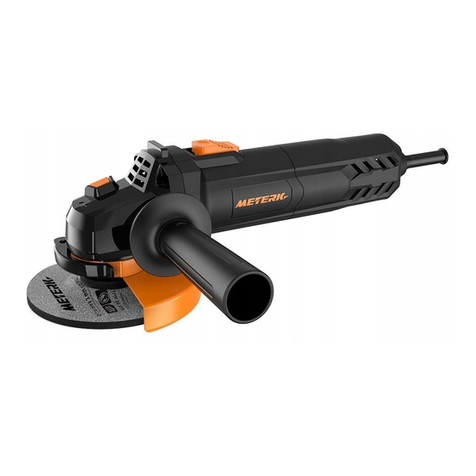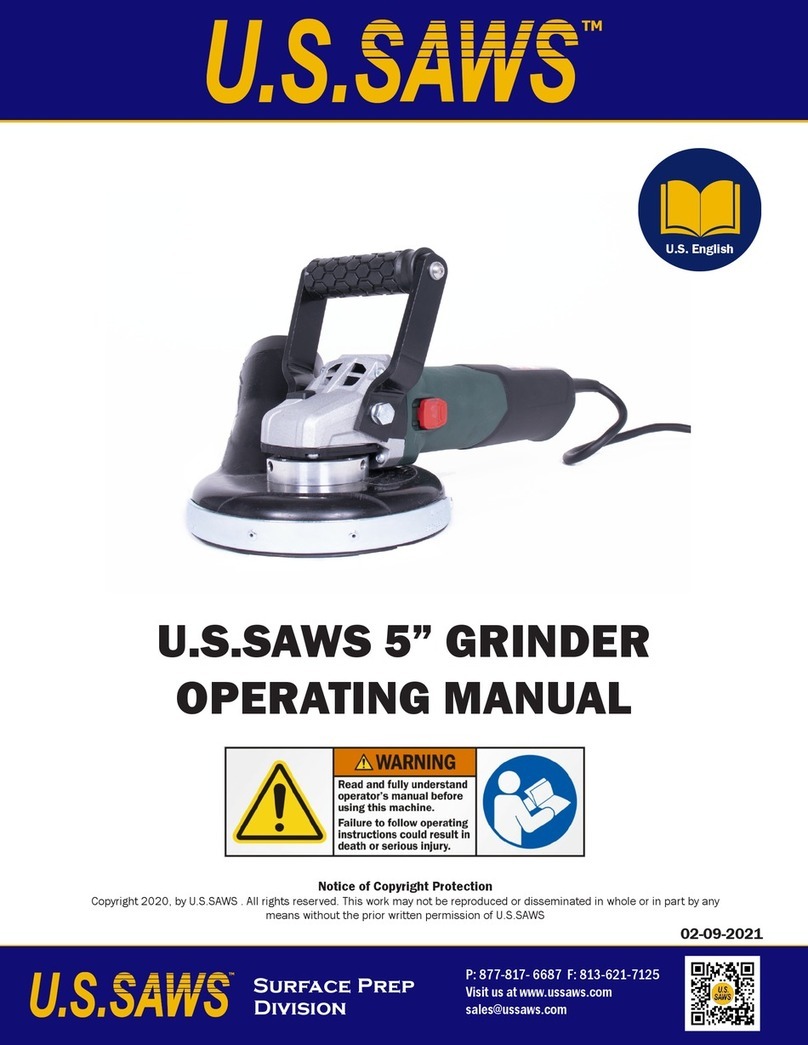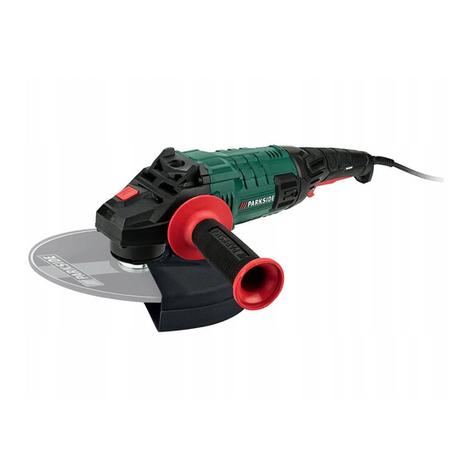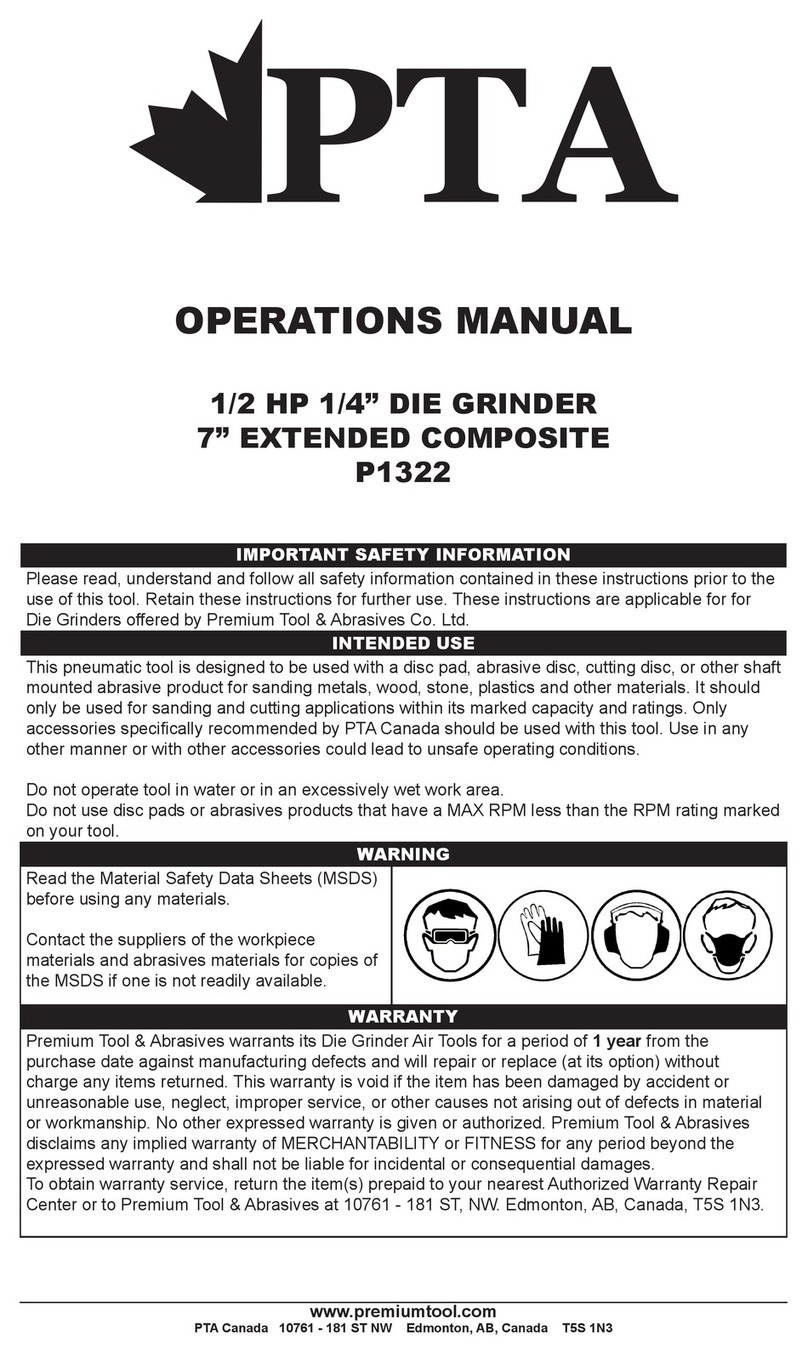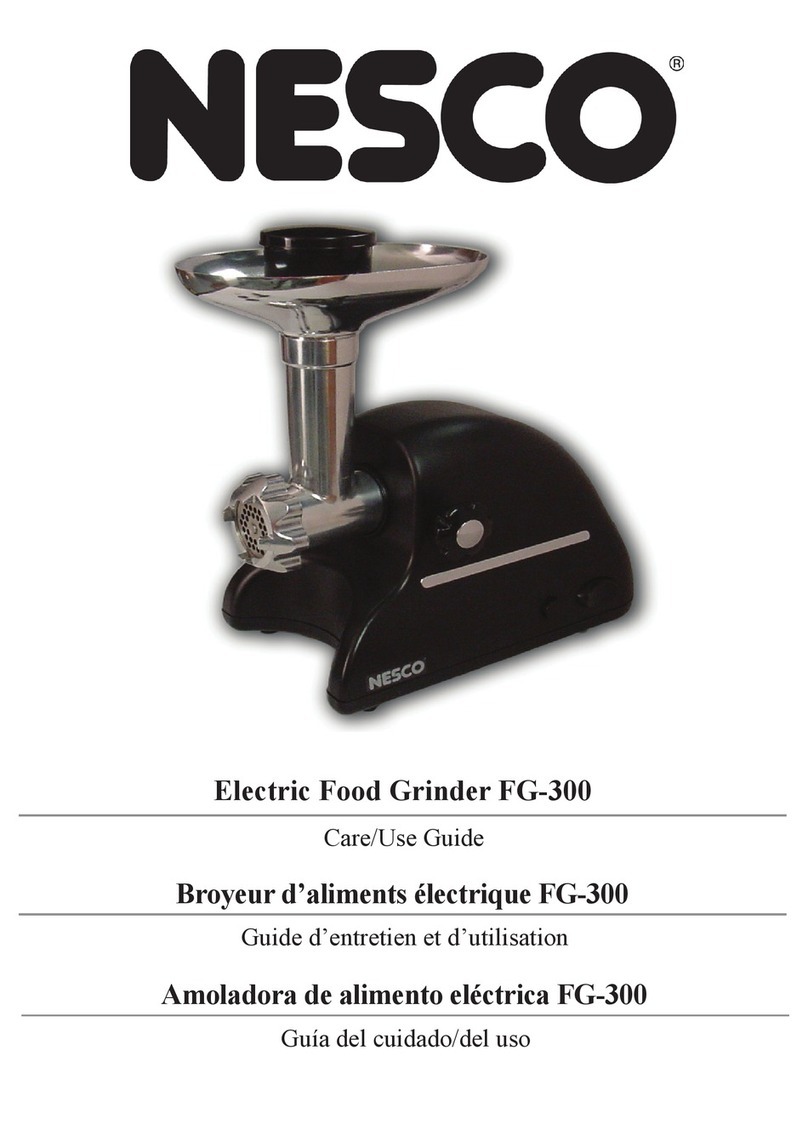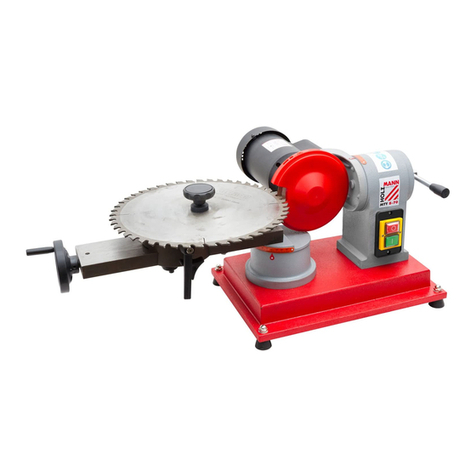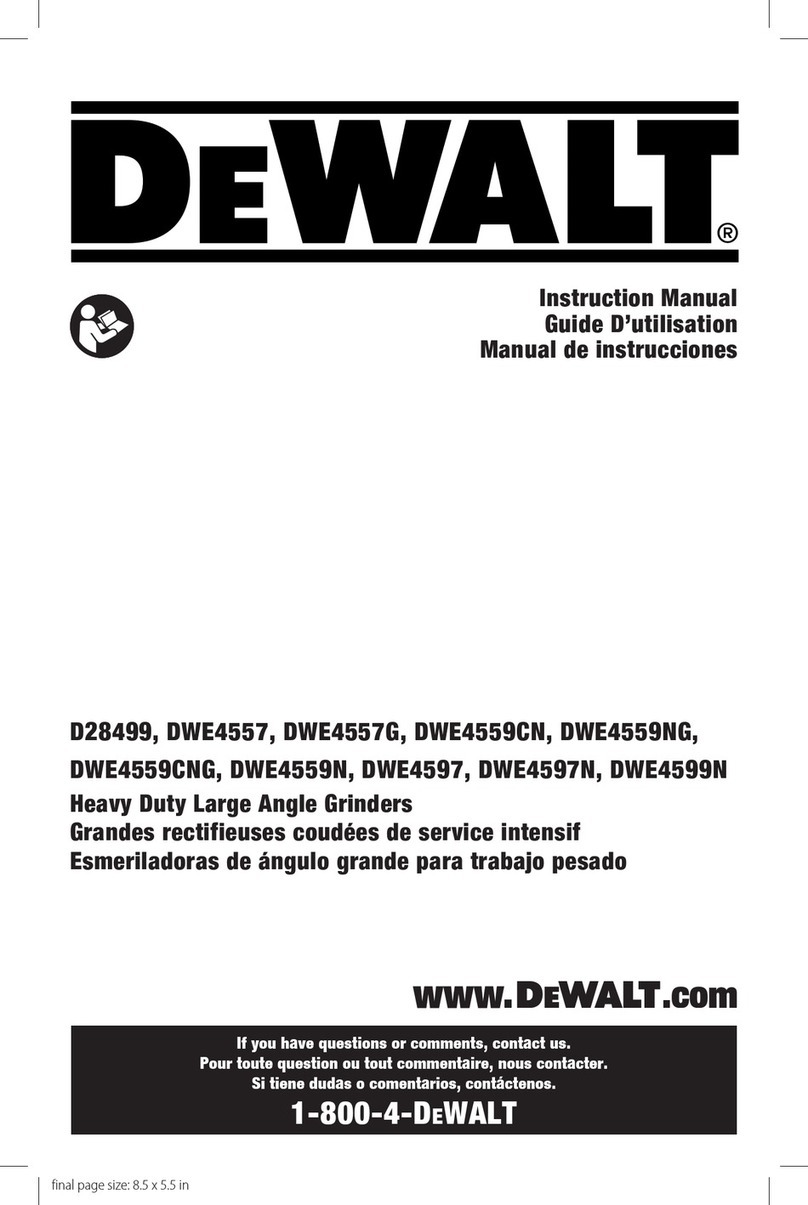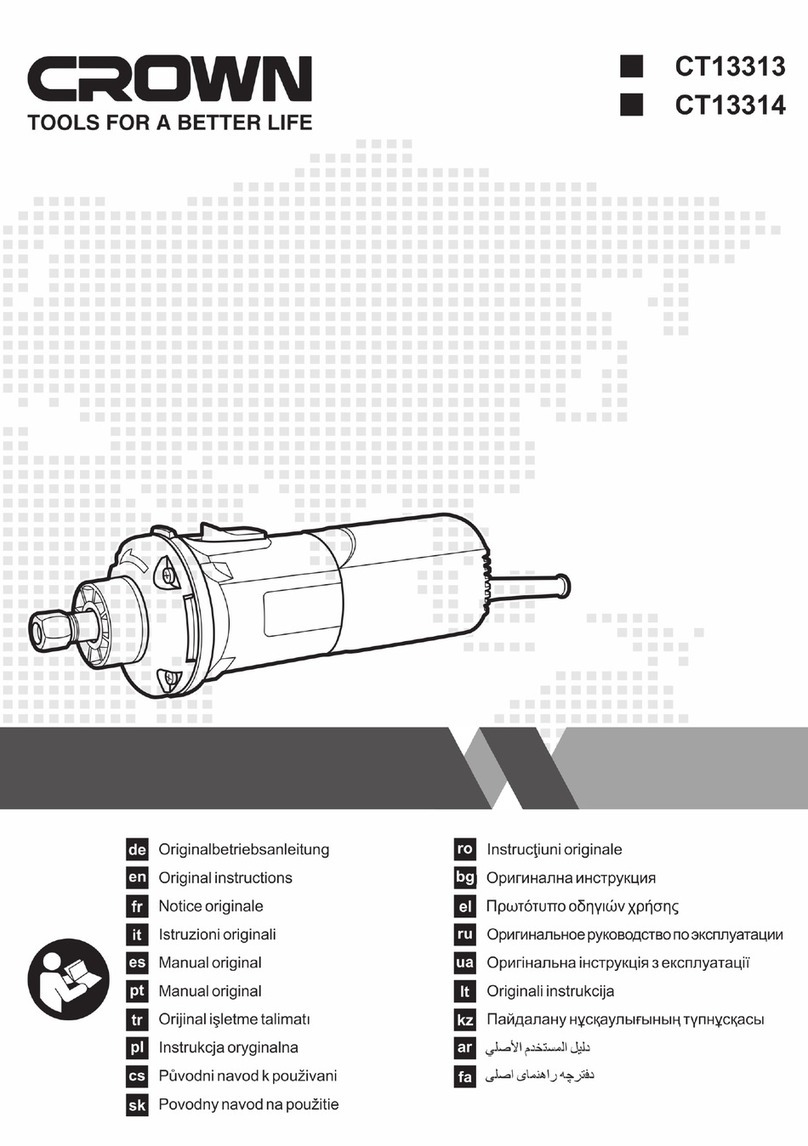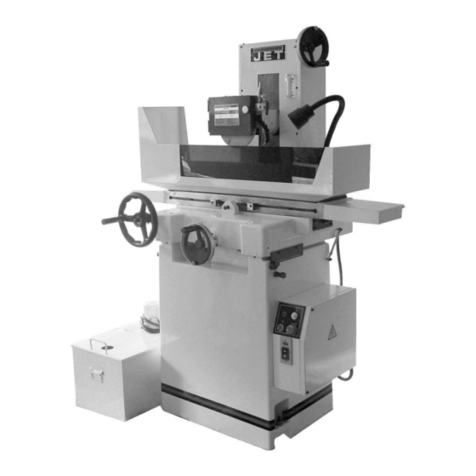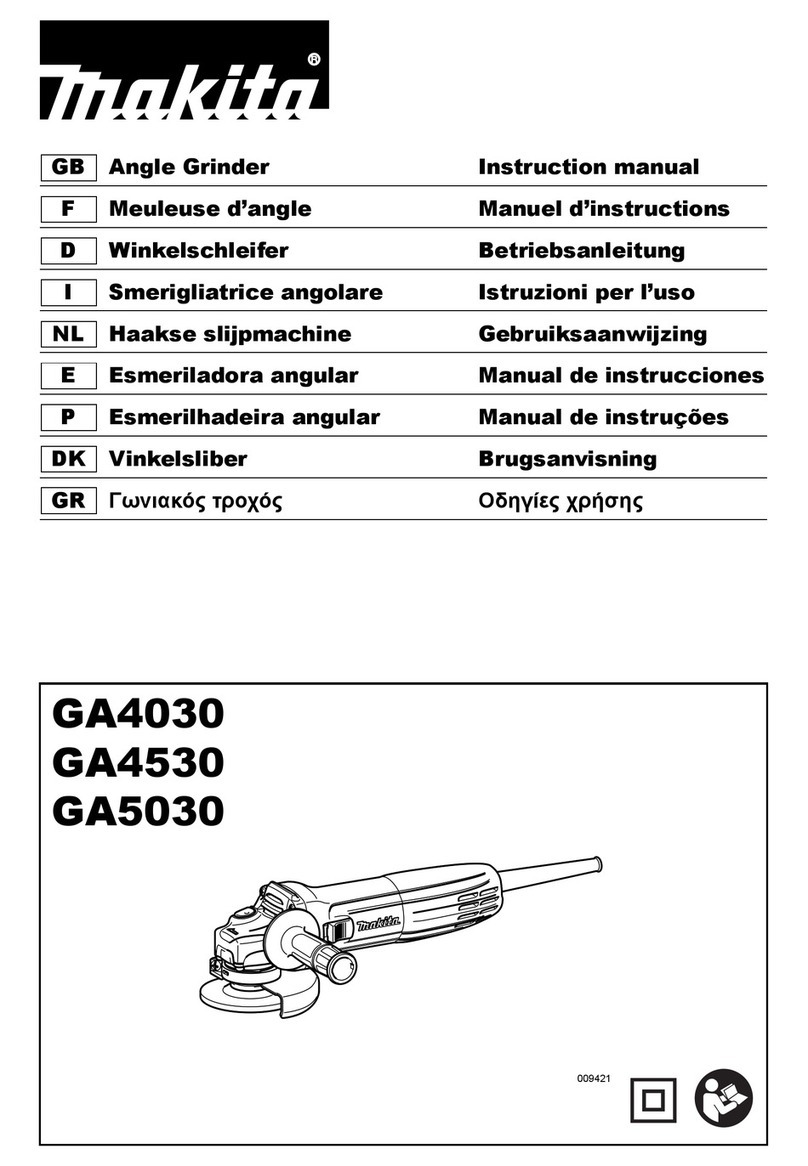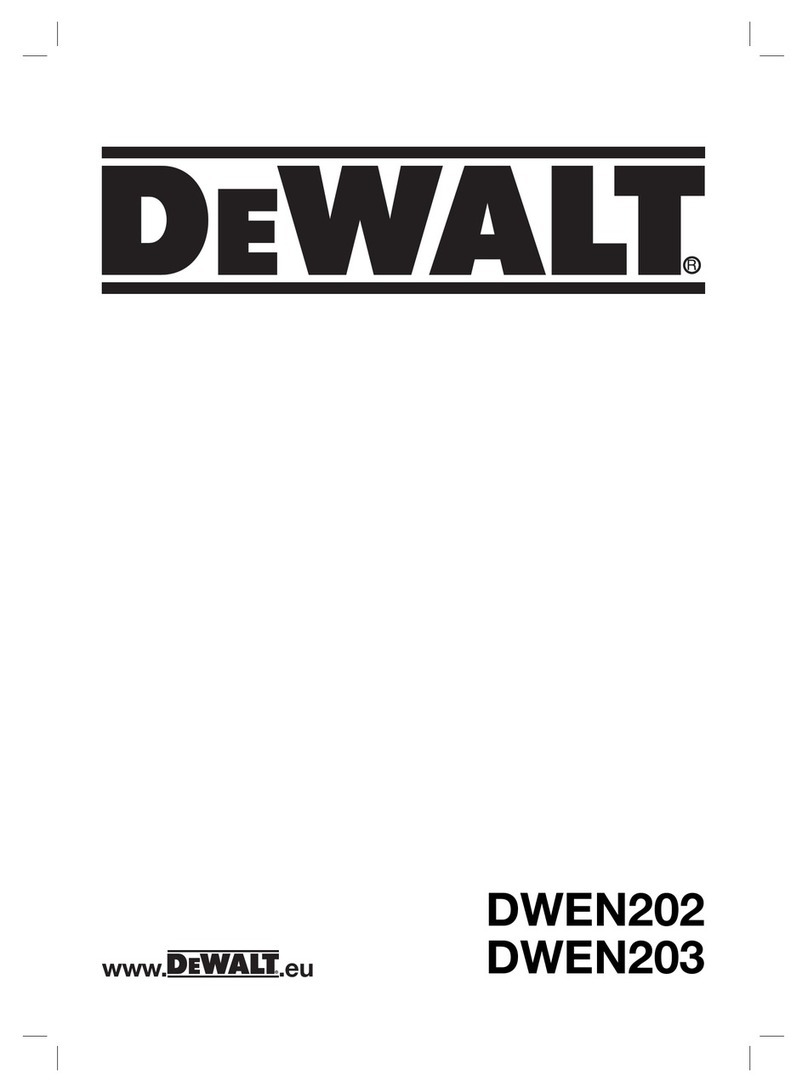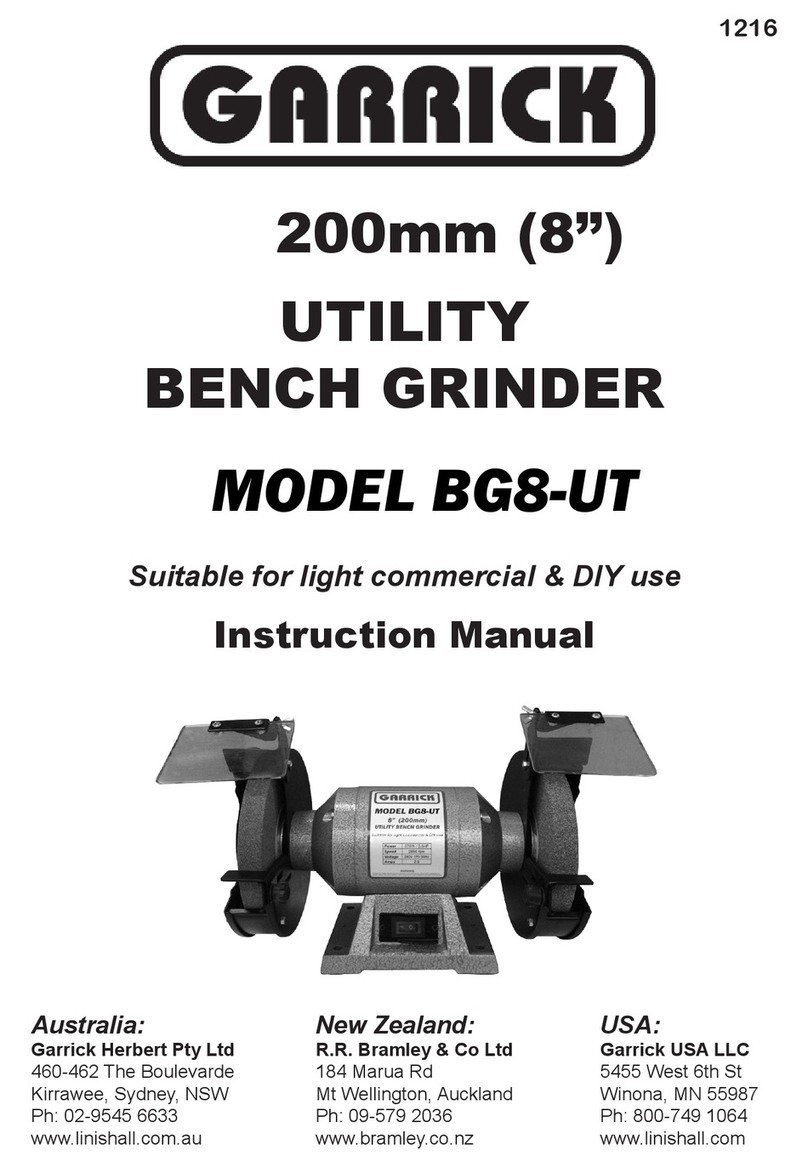
6
• Never try to operate the angle grinder without the guard
in place.
• Do not secure the angle grinder in a vice or work bench
and use it as a static grinder. It can lead to serious injury.
• Never apply excessive pressure to the disc. It might
shatter causing personal injury.
• Ensure the work piece to be ground or cut, is held tight in
a vice or other clamping system.
• Always use the front handle and ensure a good grip on the
grinder housing with one hand and the front handle with
the other hand before proceeding with any work.
• Make sure that the disc is not in contact with the work
when you start the grinder.
• Be careful not to damage the spindle or either of the
disc flanges. Damage to these parts could result in disc
breakage.
• Do not press the spindle lock button whilst the spindle
is turning.
• Only use good quality grinding and cut off discs. Cheap
poor quality discs tend to glaze up which loads the motor
and can damage it. Use discs for their designated purpose
only. For instance, do not use cutting discs for grinding or
metal wheels on masonry.
• Watch out for flying sparks. Hold the tool at an angle of
approximately 15º to 30º to the work piece surface.
• Let the disc do the grinding or cutting at a reasonable
feed, as overloading will occur if too much pressure is
applied and the disc slows resulting in inefficient cutting
and possible damage to the motor.
• When using the grinder, use safety equipment including
safety goggles or shield, ear protection, dust mask and
protective clothing including safety gloves.
ALWAYS WEAR EYE PROTECTION
Wear goggles
Wear hearing protection
Wear a breathing mask
Safety instructions for all operations
Safety warnings common for grinding,
abrasive cutting-off operations:
a) This power tool is intended to function as a grinder,
or cut-off tool. Read all safety warnings, instructions,
illustrations and specifications provided with this
power tool. Failure to follow all instructions listed below
may result in electric shock, fire and/or serious injury.
c) Do not use accessories which are not specifically
designed and recommended by the tool
manufacturer. Just because the accessory can be
attached to your power tool, it does not assure safe
operation.
d) The rated speed of the accessory must be at least
equal to the maximum speed marked on the power
tool. Accessories running faster than their rated speed
can break and fly apart.
e) The outside diameter and the thickness of your
accessory must be within the capacity rating of your
power tool. Incorrectly sized accessories cannot be
adequately guarded or controlled.
f) The arbour size of wheels, flanges, backing pads or
any other accessory must properly fit the spindle of
the power tool. Accessories with arbour holes that do
not match the mounting hardware of the power tool will
run out of balance, vibrate excessively and may cause
loss of control.
g) Do not use a damaged accessory. Before each use
inspect the accessory such as abrasive wheels for
chips and cracks, backing pad for cracks, tear or
excess wear, wire brush for loose or cracked wires.
If power tool or accessory is dropped, inspect for
damage or install an undamaged accessory. After
inspecting and installing an accessory, position
yourself and bystanders away from the plane of
the rotating accessory and run the power tool at
maximum no-load speed for one minute. Damaged
accessories will normally break apart during this test time.
